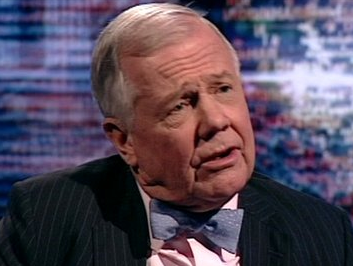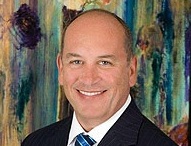Timing & trends
 The advent of computers and the internet have brought much change to the industry. Brokers are no longer required to trade stock; anyone can trade stock for less than $10 a trade. Algo-machines now represent probably well over 30% of daily volume on any exchange in a given day. These trading software platforms place and make trades in nanoseconds and often hold stocks for no more than 16 seconds. Just ask the guys at Tradebot.
The advent of computers and the internet have brought much change to the industry. Brokers are no longer required to trade stock; anyone can trade stock for less than $10 a trade. Algo-machines now represent probably well over 30% of daily volume on any exchange in a given day. These trading software platforms place and make trades in nanoseconds and often hold stocks for no more than 16 seconds. Just ask the guys at Tradebot. When I wrote last year that the S&P would hit 1500, most experts thought I was nuts. The fundamentals weren’t there to justify it, and to some degree they were right. But the market has changed. So much in fact that technicals, and a lot of what experts have studied throughout their careers, are no longer relevant – at least not entirely.
Those who used to study technical charting patterns have never studied the effects of these machines. It’s a different world now.
On the Canadian front, the big institutions are also benefitting from the little guys. They make trades for little cost and even get a kick back from the exchange based on the amount of trades they make. When everyone is scraping for pennies, you can bet the big guys are taking advantage of every retail trader they can by short selling and manipulating the markets any which way that benefits them. This isn’t hard to do given the liquidity issues in the Canadian market which makes it really difficult for companies to thrive.
Congress has pushed the debt ceiling deadline out to mid-May to give both sides more time to pound out a budget agreement, so there are strong reasons to expect a favorable seasonal rally to continue.
There still remains a tremendous amount of cash on the sidelines earning next to nothing in savings accounts and bond funds to fuel a further rally. And as I mentioned in my letter, “Time to Sell the World,” there is evidence that previously bearish investors who took money out of the stock market after 2008 are pouring back in. I also said that once the S&P pops passed 1500, we should all be much more careful as, “we have more downside than up at these levels.“
The key to investing is to buy low and sell high; not buy high and sell higher. It may not necessarily happen this month, but I feel we’re closing in on a near-term top. I started this letter saying this is the best January for the Dow Industrials since 1994. What I didn’t tell you is that the best January in 1994 for the Dow Industrials was followed by a nasty decline of 10% the month after.
I know investors remain bullish and sentiment has been pushed higher, but it’s time to start peddling back a little and let your money breathe. Even if just a little.
The market has been up 11 of the last 12 days…
Time to Sell the World?
I believe the markets have topped in many countries around the world, including Germany, France, and the UK. That means it’s probably time to sell Europe; the U.S. is getting very close. A rise above 1475 in the S&P next week could lead us to 1490. I predicted we would peak at 1500 last year within a twelve-month time frame, and we’re awfully close to that number.
I am not saying it’s the end, but I we have more downside than up at these levels – especially in the short-term.
Next week may not be pretty for European markets. But then again, fundamentals haven’t mattered in years, why should technicals?
(Btw, Greek unemployment data was just released and it wasn’t good. The broad unemployment rate for October has been revised to a new record high of 26.8%. The youth (15-24 age group) unemployment also rose to a new all-time high of 56.6%. The ratio of those employed (3.68MM) to unemployed (1.34MM) has now dropped to a record low 2.75x. What’s even more staggering is that the total number of inactive workers (3.34MM) could soon surpass all those who are working. Inactive are those persons who are neither classified as employed nor as unemployed.)
Inflationary Dragons
Bill Gross, the world’s largest bond fund manager and one of the smartest in the business, has been very bold in his statements regarding worldwide monetary and fiscal policy, and gold.
In his most recent monthly investment outlook:
“Investors should be alert to the long-term inflationary thrust of such check writing. While they are not likely to breathe fire in 2013, the inflationary dragons lurk in the “out” years towards which long-term bond yields are measured. You should avoid them and confine your maturities and bond durations to short/intermediate targets supported by Fed policies.
In addition, be aware of PIMCO’s continued concerns about the increasing ineffectiveness of quantitative easing with regards to the real economy. Zero-bound interest rates, QE maneuvering, and “essentially costless” check writing destroy financial business models and stunt investment decisions which offer increasingly lower ROIs and ROEs.
Purchases of “paper” shares as opposed to investments in tangible productive investment assets become the likely preferred corporate choice. Those purchases may be initially supportive of stock prices but ultimately constraining of true wealth creation and real economic growth.
At some future point, risk assets – stocks, corporate and high yield bonds – must recognize the difference. Bernanke’s dreams of economic revival, which would then lead to the day that investors can earn higher returns, may be an unattainable theoretical hope, in contrast to a future reality. Japan we are not, nor is Euroland or the U.K. – just yet. But “costless” check writing does indeed have a cost and checks cannot perpetually be written for free.“
Gross said that subject to the debt ceiling, the Fed is buying everything that Treasury can issue. He warns that we have this “conglomeration of monetary and fiscal policy” as not just the US is doing this but Japan and the Eurozone is doing this also.
Gross is a bond king, not a gold investor. But even he cannot stay away from the lustre of the shiny metal.
On December 30, Gross tweeted:
“2013 Fearless Forecasts: 1) Stocks & bonds return less than 5%. 2) Unemployment stays at 7.5% or higher 3) Gold goes up……”
Gross may not always be right, and his timing not always be spot on, but he is certainly more right than wrong. And in the investment world, that makes him a superstar.
Gold bears may want to rethink their strategy…
Ivan Lo
Questions?
Call Us Toll Free: 1-888-EQUEDIA (378-3342)

“Sometimes I’m so concerned about the world I want to jump out of the window.” said Faber at a seminar in Helsinki hosted at the Finnish National Opera by Evli Bank Oyj yesterday “In the worst case scenario, in the systemic failure that I expect, it would still have some value,” Faber told an audience in Finland yesterday. “in the worst case scenario, in the systemic failure that I expect, [gold] would still have some value,” “I’m prepared to make a bet,” said Faber responding to Robert Shiller “You keep your US Dollars and I’ll keep my gold. We’ll see which one goes to zero first.”
Marc Faber : In the Systemic Failure that I expect Gold would still have some value
Marc Faber :If you can’t take a 20 percent decline, don’t get out of your bed in the morning
Marc Faber : In the Systemic Failure that I expect Gold would still have some value
Everyone should keep gold in their portfolios as the precious metal will be able to offer value to investors even in a worst-case scenario, said Marc Faber at an event hosted by Evli Bank Oyj in Helsinki Finland . “In the worst case scenario, in the systemic failure that I expect, it would still have some value,” When “the system goes down,” and only plastic credit cards are left, “maybe then people will realize and go back to some gold-based system or such,” he said
Marc Faber : When The System goes down , maybe then people will realize and go back to some Gold-based system or such
“In the worst case scenario, in the systemic failure that I expect, it (Gold) would still have some value,” Marc Faber, who is also the founder and managing director of Marc Faber Ltd., said at an event hosted by Evli Bank Oyj in Helsinki. When “the system goes down,” and only plastic credit cards are left, “maybe then people will realize and go back to some gold-based system or such,” he said. – in Bloomberg
MARC FABER”S GREAT DAILY BLOG HERE
Dr. Marc Faber author of the Gloom, Boom and Doom report is a world class Investor, Doctor Faber ‘s typically controversial and contrarian views have earned him the label of Dr. Doom. Doctor Doom also trades currencies and commodity futures like GoldNatural Gas and Crude Oil.Even his harshest critics must admit that he’s been unerringly correct in hismarket forecasts over the past three decades. Dr Marc Faber was born in Zurich, Switzerland. He went to school in Geneva and Zurich and finished high school with the Matura. He studied Economics at the University of Zurich and, at the age of 24, obtained a PhD in Economics magna cum laude. Between 1970 and 1978, Dr Faber worked for White Weld & Company Limited in New York, Zurich and Hong Kong. Since 1973, he has lived in Hong Kong. From 1978 to February 1990, he was the Managing Director of Drexel Burnham Lambert (HK) Ltd. In June 1990, he set up his own business, which acts as an investment advisor and fund manager.

 Noted investor and author Jim Rogers says index-based commodity ETFs will be an easy-to-use strategy for investors to profit from supply shortages in natural resources combined with easy monetary policies from central banks around the world.
Noted investor and author Jim Rogers says index-based commodity ETFs will be an easy-to-use strategy for investors to profit from supply shortages in natural resources combined with easy monetary policies from central banks around the world.
Speaking Wednesday at the 2013 ETF Virtual Summit, Rogers pointed out that world governments have gotten to the habit of printing money in the wake of the financial crisis. [Jim Rogers: Use Commodity ETFs to Profit from Supply Shortages]
Rogers noted that the new Japanese Prime Minister, Shinzo Abe, won his election on promises to increase quantitative easing to jumpstart the stagnating economy. Consequently, the Japanese yen has been depreciating and Japanese equities have been rallying on the optimistic outlook. [Currency ETFs: Everyone Hates the Japanese Yen]
- CurrencyShares Japanese Yen Trust (NYSEArca: FXY)
- iShares MSCI Japan Index Fund (NYSEArca: EWJ)
- WisdomTree Japan Hedged Equity Fund (NYSEArca: DXJ)
- db-X MSCI Currency Hedge Equity Fund (NYSEArca: DBJP)
It all may sound good and feel good to investors, “but by the end of 2013, all this will be wearing off,” Rogers warned. “We will see serious problems and ramifications down the road.” [PIMCO Total Return ETF’s Bill Gross: Stimulus ‘Increasingly Ineffective’]
Rogers believes that investors will be able to find opportunities in natural resources as there are “supply problems in all commodities going forward.”
“We will make money in commodities because of supply shortages … and governments will print money,” Rogers added.
- PowerShares DB Commodity Index Tracking Fund (NYSEArca: DBC)
- iPath DJ-UBS Commodity Index ETN (NYSEArca: DJP)
In the metals space, Rogers is looking at base metals over precious metals.
“I suspect base metals benefit as they are down so much that they would be in a better place than precious metals,” Rogers said. “I would not be selling my base metals.”
- PowerShares DB Base Metals Fund (NYSEArca: DBB)
Additionally, Rogers is leaning toward agriculture and natural gas, which he says have been oversold. Looking at the agriculture market, the world is consuming more than is produced by farmers. Some areas of the world are witnessing a food shortage.
- PowerShares DB Agriculture Fund (NYSEArca: DBA)
- ELEMENTS Rogers International Commodity Agriculture ETN (NYSEArca:RJA)
- United States Natural Gas Fund (NYSEArca: UNG)
“We are running out of farmers,” Rogers said. “No one is going into farming. The old are getting out and the young aren’t coming in.”
He said indexed ETFs are “the best way for everyone to invest in everything.” ETFs make getting exposure to commodities as simple as buying individual stocks, Rogers added.
For more information on commodities, visit our commodity ETFs category.
The opinions and forecasts expressed herein are solely those of Tom Lydon, and may not actually come to pass. Mr. Lydon serves as an independent trustee of certain mutual funds and ETFs that are managed by Guggenheim Investments; however, any opinions or forecasts expressed herein are solely those of Mr. Lydon and not those of Guggenheim Funds, Guggenheim Investments, Guggenheim Specialized Products, LLC or any of their affiliates. Information on this site should not be used or construed as an offer to sell, a solicitation of an offer to buy, or a recommendation for any product.

- International stocks continue to show strength
- The most interesting market in the world
- A reversal in the making…
Japanese stocks have been an absolute Dumpster fire for more than two decades.
Every peak stalled lower than the one before it. And unlike U.S. equities, Japanese stocks did not climb out of the 2008 financial crisis with any efficiency. In fact, the Nikkei would need to almost double from here if it were to top its 2007 highs.
Yet despite its recent history, something is different in Japan right now…
“It’s the most interesting market — technically — in the world…this is for real.”
That’s Barry Sine talking. He’s the director of equities research at Drexel Hamilton — and he’s known for using a combined approach of both technical and fundamental indicators to fuel his work.
Barry’s noticed a change in the Nikkei recently. He’s not alone. Volume has flooded into Japanese stocks as they have moved steadily higher for the past nine weeks:

It has been nothing short of a bullish reversal of epic proportions for Japanese stocks. A sharp downtrend was abruptly reversed as the Nikkei takes out its 2012 highs. Now its post-financial crisis highs are just a stone’s throw away…
Japan should already be on your radar. As a matter of fact, Bill Bonner mentioned it in his new trade of the decade all the way back in early January 2010.
“Let’s see, what has been beaten down, dissed, battered and abused for the last 20 years or more?” Bill mused three years ago this month. “What is it that people don’t want? What is it that they expect to go down…possibly forever?”
“Of course…Japanese stocks!”
A bull market in Japanese equities is coming. Get ready…the most interesting market in the world is primed for gains in the coming weeks and months.
 Rude Numbers
Rude Numbers
Targets, Predictions and Wild Guesses

 Rude Trends
Rude Trends
When to Buy… When to Sell

Stocks are riding high. But it’s time for a (short) break.
The key here is patience. A little reversion to the mean will do this market some good. Not only that, but it will give sidelined investors a better buy zone. If and when stocks retreat, we can watch for bullish bounces off the short-term moving average to offer us ideal buying opportunities.
Remember, we don’t like to see the market travel too far too fast. Keep a level head and don’t chase this week.
 Ignore At Your Own Peril
Ignore At Your Own Peril
Today’s Must-Read Links
- With the flip of a switch, doctors can now make the human body heal and regenerate itself — quickly, painlessly and naturally.
- See my next potentially-winning trade
- The safest way to earn 42%… Year after year

 “Markets are constantly in a state of uncertainty and flux and money is made by discounting the obvious and betting on the unexpected” – George Soros
“Markets are constantly in a state of uncertainty and flux and money is made by discounting the obvious and betting on the unexpected” – George Soros
As we enter 2013, I’m writing to summarize what happened in the markets last year, my outlook for 2013 and how we are positioning our portfolios to manage risk and preserve capital.
2012 saw a continuation of the volatility that’s characterized the markets since the global financial crisis, which will be marking its fifth anniversary in September. At the same time, the Emerging, European and the U.S. markets finished the year with gains above 10%, despite concerns about Europe’s finances and worries that the US would fall off the “fiscal cliff” and go back into recession. And while Canada was up by 4%, it lagged the U.S. for the third straight year.












